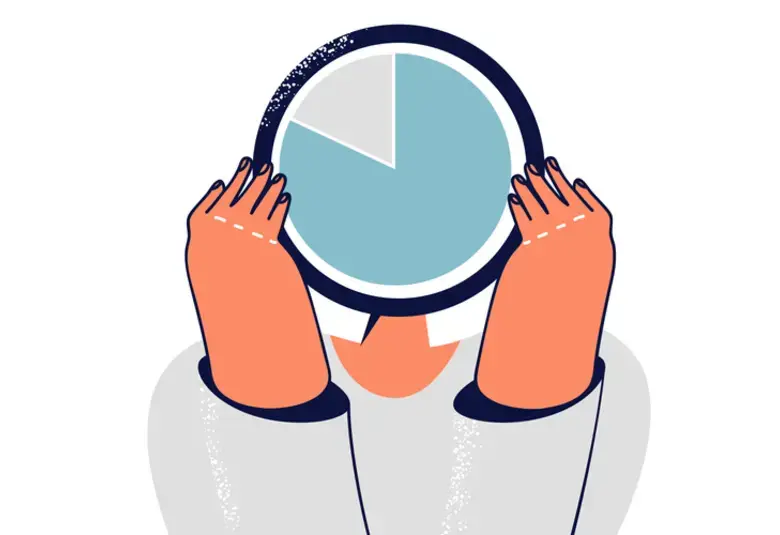Patients living with serious mental illnesses (SMI) have high rates of cardiovascular morbidity and associated premature mortality. SIRS 2023 brought together a panel of clinical psychiatrists, cardiologists and early career researchers to discuss the relationship between a diagnosis of SMI and selected specific cardiac conditions, and on how having a psychotic illness may influence the management, and ultimately outcomes, of these conditions.
Drug induced tachycardia
Dr. Dan Siskind (Princess Alexandra Hospital Metro South Addiction and Mental Health Service, Australia) shared that nearly 25% of patients with first-episode psychosis or schizophrenia develop treatment-resistant schizophrenia (TRS) when beginning treatment.1,2
Nearly 25% of patients with first-episode psychosis or schizophrenia develop treatment-resistant schizophrenia (TRS) when beginning treatment
However, one of the most commonly used agents is also associated with the development of sinus tachycardia; prevalence estimates range from 3% to 67%.4 If asymptomatic, the tachycardia is generally left untreated.1,4 More careful monitoring of troponin I, CRP and ECG is recommended if the patient’s heart rate exceeds 120 beats per minute. In terms of pharmacological intervention, a cardio-selective beta-blocker may be appropriate, except in a patient with a history of postural hypotension.1
Acute coronary syndrome
Development of sinus tachycardia during treatment of treatment resistant schizophrenia is common; prevalence estimates range from 3% to 67%
The leading cause of death in patients with SMI is cardiovascular disease (CVD);5 Dr. Kevin O’Gallager (King’s College London, UK) provided an overview of data demonstrating the treatment gap in management of CVD in patients with SMI as compared to the general population.
First, Dr. O’Gallagher pointed out that many patients with SMI concurrently have many of the known risk factors for CVD; for instance, smoking, hypertension, use of anti-psychotics, metabolic derangements, social deprivation, and low activity levels.5 Dr. O’Gallagher then further explained how patient factors, biological factors and system factors converge to increase the risk of CVD in this patient population. Patient factors encompass delayed presentation, missed appointments and socioeconomic factors, such as social isolation and lack of resources. Biological factors include an abnormal pain threshold/increased pain tolerance, an increased risk of silent CVD and electrocardiogram changes evident even on resting ECG. System factors that may delay appropriate diagnosis include physician misattribution of physical symptoms to SMI, poor performance of CVD risk prediction models in SMI and relative under-investigation of CVD in patients with SMI.
Many patients with mental illness also have most of the known risk factors for cardiovascular disease
Dr. O’Gallagher presented emergent observational data from ongoing work that is linking psychiatry and cardiac centres in London, UK. Of 12,102 patients with ST-elevated myocardial infarction (STEMI), 457 (3.78%) also had SMI. In these patients, symptom-to-balloon times were longer, and at one year after discharge, they were less likely to receive a beta-blocker, ACE-inhibitor, statin, or nitrate, but more likely to receive a loop diuretic.5 These patients showed higher rates of major adverse cardiovascular events and all-cause mortality (ACM) than patients with STEMI and no SMI.
Ongoing efforts to improve care involve the use of a platform called “cogstack,” a natural language processing tool, to read clinical notes and pick out diagnoses from them. It will also be able to access data regarding diagnostics, procedures, medications, and post-hospital factors to get a better idea of the patient journey of patients with STEMI and SMI. The hope is that this system may be one strategy to help mitigate the treatment gap for patients with SMI and CVD.
Atrial fibrillation
Patients with mental illness and atrial fibrillation were less likely to receive oral anticoagulant therapy
Dr. Fiona Gaughran (King’s College, UK) presented her PhD student Dina Farran’s work on atrial fibrillation (AF) in patients with SMI.6 Their systematic review found low rates of AF among patients with SMI as compared with people without SMI.7 They also discovered that patients with AF and SMI were less likely to receive oral anticoagulation (OAC) therapy than people with AF and no SMI.7 Lack of provision of OAC therapy to patients with AF and concurrent SMI persisted in two retrospective studies, one conducted in a general hospital setting and the other in a mental healthcare setting.6
This gap inspired the development of the electronic Clinical Decision Support System (eCDSS) to cue clinicians to appropriate management of AF (assessment of bleeding and stroke risk, prescription of OAC) in a secondary mental healthcare setting. Ms. Farran’s study is underway to assess the feasibility, acceptability and utility of the eCDSS in hospital wards that treat adults with mental health challenges, and she will be reporting results upon its completion.6
Heart failure
The risk of heart among people with mental illness is double that of people without mental illness.
Dr. Christoffer Polcwiartek (Aalborg University Hospital, Denmark) explained that heart failure (HF) is defined as a clinical syndrome in which the heart cannot meet the body’s demand for blood, nutrition and oxygen.8 Risk factors for HF are the same as described above for acute coronary syndrome. The risk of HF among patients with SMI is double that of people without SMI.8 Depression affects 20-50% of patients with HF.
Men with mental illness and heart failure had higher rates of mortality than women with mental illness and heart failure.
Dr. Polcwiartek shared data from a retrospective cohort study looking at HF outcomes in the Duke University Health System between 2002 and 2017 which found higher rates of ACM in male patients with HF and SMI as compared to patients with HF but no SMI.8 Patients with SMI received fewer prescriptions for ACE inhibitors, angiotensin receptor blockers and beta-blockers, even though ACE inhibitors are meant to be first-line therapies. Of further interest, even though the rates of access to advanced procedures for HF (implantable cardioverter defibrillator, cardiac resynchronization therapy, left ventricular assist device and heart transplantation) were similar for those with and without SMI, patients with SMI nevertheless had higher rates of ACM.8
Dr. Polcwiartek recommended a multidisciplinary model of care for early preventive strategies, and the use of better screening tools to identify at-risk patients as methods to address these mental health-related disparities in HF management.




